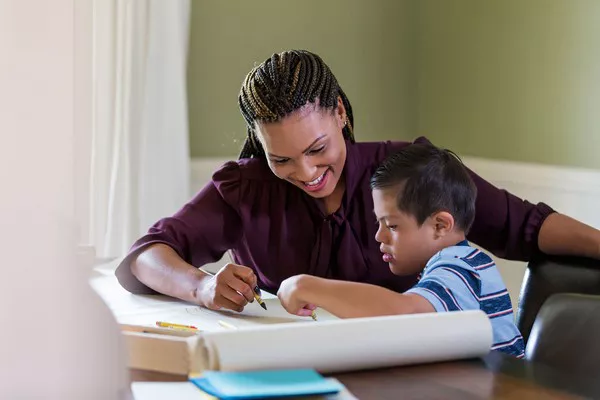In both our personal and professional lives, positive relationships serve as the cornerstone of success, well – being, and fulfillment. Whether it’s with family, friends, colleagues, clients, or acquaintances, the quality of our relationships directly impacts our happiness, productivity, and overall life satisfaction. From a professional standpoint, building positive relationships is not just about being friendly; it involves a strategic and intentional approach that encompasses self – awareness, effective communication, empathy, trust – building, and more. This article will explore in detail the key strategies and principles for building positive relationships.
Self – awareness: The Foundation of Positive Relationships
Understanding oneself is the first step towards building positive relationships. Self – awareness allows us to recognize our own emotions, strengths, weaknesses, values, and communication styles. When we are aware of these aspects, we can better manage our behavior in interactions with others, avoid misunderstandings, and respond appropriately to different situations.
Emotional Intelligence
Emotional intelligence (EI) is a crucial component of self – awareness. It involves the ability to recognize, understand, and manage our own emotions, as well as the emotions of others. People with high EI are better able to empathize with others, communicate effectively, and resolve conflicts. To develop emotional intelligence, we can practice self – reflection, pay attention to our emotional reactions in different situations, and learn to regulate our emotions in a healthy way.
Values and Beliefs
Our values and beliefs shape our attitudes, behaviors, and decisions. When we are clear about our values, we can make choices that are consistent with them, which helps us build authentic relationships. For example, if honesty is one of our core values, we will be more likely to be truthful in our interactions with others, which in turn builds trust and respect.
Communication Styles
Everyone has a unique communication style, which can be influenced by factors such as culture, personality, and upbringing. Understanding our own communication style, as well as the styles of others, can help us communicate more effectively. For instance, some people are more direct and assertive in their communication, while others are more indirect and diplomatic. By being aware of these differences, we can adjust our communication style to better suit the situation and the person we are interacting with.
Effective Communication: The Key to Connection
Communication is the lifeblood of relationships. It is through communication that we express our thoughts, feelings, needs, and desires, and that we understand the perspectives of others. Effective communication is not just about speaking clearly; it also involves listening actively, using non – verbal cues, and being sensitive to the needs and emotions of the other person.
Active Listening
Active listening is a fundamental skill in building positive relationships. It involves giving the other person our full attention, both verbally and non – verbally. When we actively listen, we focus on understanding the other person’s message, rather than just waiting for our turn to speak. We can show that we are listening by maintaining eye contact, nodding, asking clarifying questions, and paraphrasing what the other person has said.
Clear and Concise Expression
In addition to listening, it is important to express ourselves clearly and concisely. When we communicate, we should strive to be as clear as possible about our thoughts, feelings, and intentions. Avoid using jargon, technical terms, or complex language that the other person may not understand. Instead, use simple, straightforward language that is easy to follow.
Non – verbal Communication
Non – verbal communication, such as body language, facial expressions, and tone of voice, can convey a great deal of information. In fact, research has shown that a significant portion of communication is non – verbal. Paying attention to our non – verbal cues, as well as the cues of others, can help us better understand the underlying meaning of a message. For example, crossed arms and a closed posture may indicate defensiveness, while a smile and open body language can convey friendliness and openness.
Feedback
Feedback is an important part of effective communication. It allows us to let the other person know how we feel about their message, and it also provides an opportunity for us to clarify any misunderstandings. When giving feedback, it is important to be specific, constructive, and respectful. Focus on the behavior or situation, rather than the person, and offer suggestions for improvement.
Empathy: Understanding and Connecting with Others
Empathy is the ability to understand and share the feelings of others. It is a crucial skill in building positive relationships, as it allows us to connect with others on a deeper level, show that we care, and build trust and rapport. When we empathize with others, we are able to see the world from their perspective, which helps us better understand their needs, feelings, and motivations.
Perspective – taking
Perspective – taking is the process of putting ourselves in the other person’s shoes and trying to understand their point of view. It involves suspending our own judgment and assumptions, and actively seeking to understand the other person’s experiences, feelings, and beliefs. By taking the time to understand the other person’s perspective, we can show that we respect their opinions and feelings, and we can also avoid misunderstandings and conflicts.
Emotional Validation
Emotional validation is the process of acknowledging and accepting the other person’s feelings, even if we don’t agree with them. When we validate the other person’s emotions, we are showing that we respect their feelings and that we are willing to support them. For example, if a friend is feeling upset about a situation, we can validate their feelings by saying something like, “I can see that you’re really upset about this, and I’m here for you.”
Compassion
Compassion is the feeling of deep sympathy and sorrow for another person who is stricken by misfortune, accompanied by a strong desire to alleviate the suffering. It goes beyond empathy by also involving a sense of action. When we are compassionate towards others, we not only understand their pain but also take steps to help them. This could be as simple as offering a listening ear, providing practical assistance, or advocating for their needs.
Trust – building: The Foundation of Strong Relationships
Trust is the foundation of any positive relationship. It is the belief that the other person is reliable, honest, and has our best interests at heart. Without trust, relationships can quickly deteriorate, as we may feel hesitant to open up, share our thoughts and feelings, or rely on the other person. Building trust takes time, effort, and consistency, but it is essential for the long – term success of any relationship.
Reliability
Reliability is one of the key components of trust. When we are reliable, we do what we say we will do, when we say we will do it. We show up on time, meet deadlines, and fulfill our commitments. By being reliable, we demonstrate that we can be counted on, which helps build trust and confidence in the relationship.
Honesty and Integrity
Honesty and integrity are also essential for building trust. When we are honest, we tell the truth, even when it’s difficult. We don’t lie, cheat, or deceive others, and we are transparent in our actions and decisions. Integrity means doing the right thing, even when no one is watching. By acting with honesty and integrity, we show that we have strong moral values and that we can be trusted.
Vulnerability
Vulnerability is another important aspect of trust – building. When we are vulnerable, we open up and share our true selves with others, including our fears, insecurities, and weaknesses. This can be scary, but it is also a powerful way to build trust and intimacy in a relationship. When we show vulnerability, we are inviting the other person to do the same, which can lead to a deeper and more meaningful connection.
Conflict Resolution: Maintaining Positive Relationships
Conflict is an inevitable part of any relationship. No matter how well we get along with someone, there will always be times when we disagree or have different opinions. However, how we handle conflict can make all the difference in the quality of our relationships. Effective conflict resolution involves addressing the issue in a constructive way, rather than avoiding it or escalating the situation.
Positive Attitude towards Conflict
The first step in conflict resolution is to have a positive attitude towards conflict. Instead of seeing conflict as a negative thing, we should view it as an opportunity for growth and learning. Conflict can help us identify areas of improvement in the relationship, and it can also lead to new ideas and solutions. By approaching conflict with an open mind and a willingness to listen, we can turn a potentially negative situation into a positive one.
Active Listening and Understanding
As in other aspects of communication, active listening is crucial during conflict resolution. We should listen to the other person’s perspective without interrupting or judging, and try to understand their point of view. By showing that we are willing to listen and understand, we can build trust and respect, and we can also find common ground on which to base a solution.
Problem – solving
Once we have listened to the other person’s perspective and understood their concerns, we can start to work on finding a solution to the problem. This may involve brainstorming ideas, evaluating different options, and coming up with a mutually acceptable solution. It is important to focus on the problem, rather than on the person, and to avoid making personal attacks or accusations.
Forgiveness and Letting Go
After a conflict has been resolved, it is important to forgive and let go of any negative feelings or grudges. Holding onto anger and resentment can only damage the relationship and prevent it from moving forward. By forgiving the other person, we are showing that we value the relationship more than the conflict, and we are also giving ourselves the opportunity to move on and focus on the positive aspects of the relationship.
Nurturing Relationships: Investing in the Long – Term
Building positive relationships is not a one – time event; it requires ongoing effort and investment. We need to nurture our relationships by spending time with the people we care about, showing appreciation and gratitude, and being supportive of their goals and dreams.
Quality Time
Spending quality time with others is one of the most important ways to nurture relationships. This could involve having a meal together, going for a walk, watching a movie, or simply having a conversation. The key is to be present in the moment, put away distractions, and focus on the other person. By spending quality time together, we can strengthen our connection, build trust, and create memories that will last a lifetime.
Appreciation and Gratitude
Expressing appreciation and gratitude is another powerful way to nurture relationships. When we show appreciation for the people in our lives, we are letting them know that we value and respect them. This could be as simple as saying “thank you,” giving a compliment, or writing a note of appreciation. By expressing gratitude, we can also increase our own happiness and well – being, as well as the happiness and well – being of the people around us.
Support and Encouragement
Supporting and encouraging the people we care about is essential for nurturing relationships. This could involve offering emotional support, providing practical assistance, or cheering them on as they pursue their goals and dreams. By being there for others, we can show that we care, and we can also help them feel more confident and motivated.
Conclusion
In conclusion, building positive relationships is a complex and ongoing process that requires self – awareness, effective communication, empathy, trust – building, conflict resolution, and nurturing. By applying these principles and strategies in our interactions with others, we can build strong, healthy, and fulfilling relationships that will enrich our lives in countless ways. Whether in our personal or professional lives, positive relationships are the key to success, happiness, and well – being.
Related topics:
How to Keep Your Best Friend Forever?
Why Do Friends Grow Apart as They Get Older

























